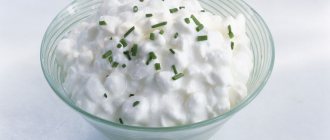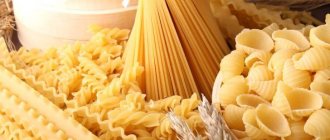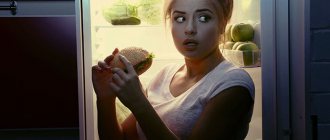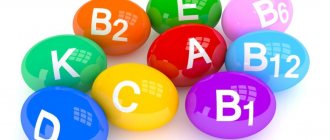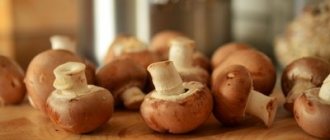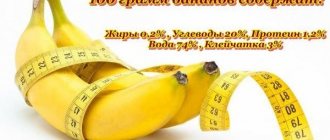Diet number 5: table
Diet No. 5 is a therapeutic nutrition system that is prescribed for certain problems with the gastrointestinal tract. It provides a balanced and equal amount of proteins and carbohydrates. Limits are set only when consuming fats.
The diet is aimed at prevention and maintenance of the general condition of the patient, but not at treatment. An experienced doctor prescribes “diet No. 5” along with medications.
Basic rules of table number five:
- eat small meals in equal portions five times a day;
- do not overeat or undereat: food must meet the body’s needs;
- the diet must contain the necessary vitamins and microelements;
- products for gallbladder disease should not contain a lot of cholesterol;
- give preference to dietary recipes;
- food should be moderately warm. Cold food can cause an attack of hepatic colic. The diet should contain a large amount of fiber: it reduces the lithogenicity of bile and improves intestinal motility.
shutterstock.com
Diet table 5 for cholecystitis
With the help of a diet, you can create rest for a damaged organ or enhance its activity, the contractile and motor function of the gallbladder, and the processes of bile secretion.
The nutritional regime during the acute period of the disease (acute cholecystitis or exacerbation of chronic cholecystitis) is based on maximum sparing of the entire digestive system. For this purpose, in the first days of illness, only fluid administration is recommended. Warm drinks are prescribed in small portions: weak tea, mineral water mixed with boiled water, sweet juices from fruits and berries diluted with water, rosehip decoction.
After 1-2 days, depending on the reduction in the severity of the pain syndrome, pureed food is prescribed in limited quantities: mucous and pureed soups (rice, semolina, oatmeal), pureed porridge (rice, oatmeal, semolina), jelly, jelly, sweet fruit mousse and berries Further, the diet includes low-fat cottage cheese, pureed, steamed lean meat, and low-fat boiled fish. White crackers are allowed. Food is given in small portions: 5-6 times a day.
If all acute phenomena disappear after 3-4 weeks, the patient can be transferred to diet No. 5. Therapeutic nutrition is combined with the prescription of antibacterial therapy, antispasmodics and bed rest.
shutterstock.com
Diet No. 5 for cholelithiasis
In case of exacerbation of cholelithiasis, more gentle nutritional regimens are prescribed, which provide for mechanical and thermal sparing of the liver and gall bladder. Food should not contain coarse fibers; fresh vegetables and fruits are excluded. Food is served pureed. Two methods of heat treatment of products are allowed: boiling and steaming.
Nutrition for cholelithiasis during an exacerbation and hepatic colic involves fasting for two days after the attack. Often cholelithiasis is an indication for surgery to remove the gallbladder, but even after surgery the disease can return.
A therapeutic diet reduces the risk of recurrence of cholelithiasis, and patients are recommended to follow the rules of table No. 5 throughout their lives.
shutterstock.com
Composition of diet 5
Water is especially important in the therapeutic diet for gallstone disease. The volume is at least 1.5-2 liters per day, which helps to dilute bile and reduce the concentration of cholesterol and bilirubin.
Diet number 5 after gallbladder removal
Diet rules after gallbladder removal.
The goal is to normalize bile secretion and digestion of food. To avoid the adverse consequences of the operation, it is necessary to adjust your food intake and diet.
- More frequent meals (4-5 times a day) reduce the load on the digestive system;
- A significant reduction in the intake of fatty foods after cholecystectomy prevents stomach spasms and the development of symptoms: bitterness in the mouth, nausea, discomfort in the right hypochondrium, pain in the hypochondrium;
- People with a gallbladder removed should eat mostly low-fat foods that are cooked without frying. Protein and plant foods, steamed and boiled or baked, form the basis of the diet of people who have undergone cholecystectomy. The rehabilitation of patients after cholecystectomy is based on these principles of therapeutic nutrition.
shutterstock.com
Diet 5 cheeses: reviews
1. Marina, Ekaterinburg
Last year I was on this diet. True, not five days, but two weeks. As a result, minus twelve kilograms, which made me incredibly happy.
True, I didn’t drink wine every day, or rather only on weekends or holidays. I replaced it with one glass of one percent kefir.
Now I’m back on this diet to lose the extra four kilograms by the New Year that I couldn’t get off last year. By the way, my extra pounds have not returned. I believe that it is very important to support your body through physical activity.
2. Elena, St. Petersburg
For me, the 5 processed cheese diet was a real godsend. I have absolutely no willpower, and in this diet you don’t need to starve, but on the contrary, eat. In five days I lost six kilograms.
My breakfast started at 10 am with a cup of coffee without sugar and one processed cheese. At 12 o'clock, a salad with tomatoes and eggs or an omelet, fried without oil and salt. At 14.00 one apple. At 16.00 a cucumber and 100 grams of cottage cheese, I didn’t have enough for more, and in the evening at 20.00 a glass of wine.
I didn’t feel the feeling of hunger in the evening, which haunted me with many diets. In general, I really enjoyed this diet. I decided to repeat it a little later.
3. Oksana, Perm.
Today is already the fifth day, and I am full all the time. In principle, the results are already visible even in your clothes, your pants fall off, and five kilograms appear on the scale in minutes. I would like to note that this diet also has a lot of advantages:
1. teaches you to eat in fractions and by the hour, but all the nutritionists in the world talk about this;
2. a feeling of lightness in the body and a complete absence of hunger;
3. As a rule, people eat little protein and prefer carbohydrates, and even useless ones, and this is excess fat.
4. Margarita, Primorye.
As a girl who is always losing weight, I couldn’t ignore such a wonderful diet. What's more, it contains my favorite foods, divided into five meals.
Yes, the diet is strict, but I like it because I have no desire to break anything.
I stuck to the diet for seven days and said goodbye to five kilograms. I also felt lightness in my body.
In addition, as a rule, the costs of this diet are very minimal, since it does not consist of such expensive products. True, if in the summer.
Well, also a bottle of good wine, but it’s better not to skimp on your health here.
Author of the article: Savlyuk Yulia
Diet menu number 5
Table No. 5 - a balanced and most gentle diet. It is rich in proteins, but limits fatty foods and carbohydrates. This type of nutrition is indicated for exacerbations of diseases of the liver, gall bladder and biliary tract, as well as acute hepatitis, cholecystitis, gastric and intestinal diseases. It differs from diet No. 5 in its increased protein content (up to 150 g, of which 80-85% is of animal origin), foods rich in lipotropic factors, limited carbohydrates, and moderate fat content. All dishes are prepared in steamed, pureed, crushed form.
The composition of diet No. 5 is the same, restrictions apply to some products and methods of preparation. The following are added to the list of restrictions:
1. Eggs are limited to 0.5 yolks per day, only white omelettes are allowed. 2. Meat, poultry and fish can only be boiled or steamed in the form of cutlets, meatballs or souffle. You can also make aspic from fish. 3. Crumbly cereals, pearl barley and barley, millet, and pasta are excluded. 4. Raw vegetables can only be eaten in chopped form; hard fruits are excluded. 5. Avoid coffee.
Diet No. 5 is more restrictive than table No. 5. In addition to excluding a number of foods, the medical diet involves greater restriction of fats, salt and sugar. The acute phase of the disease requires more gentle nutrition. This diet, like any other, should be prescribed by a doctor based on test results and the patient’s diagnosis.
shutterstock.com
Let's understand the composition
The most important thing in any product is its composition. It determines how acceptable this or that food is for a person. Third-party nutrition sources claim that processed cheese is very healthy and nutritious. They are recommended to be eaten on an ongoing basis, as they also contain some herbs and beneficial additives.
As usual, no specific information. I suggest, dear reader, to turn on critical thinking and objectively evaluate all the pros and cons.
This product is made from cottage cheese, milk powder and rennet cheeses.
Rennet are cheeses that are made from rennet with the addition of milk through special processing.
The calorie content of the product is quite high. On average there are 225-300 kilocalories per 100 grams. However, despite its calorie content, the nutritional value is extremely low. And the reason for this is the almost zero percentage of carbohydrate content.
Per 100 g there are:
- Fats - 13.6 g.
- Proteins 24.4 g.
- Carbohydrates - 0 gr.
- Water - 62 gr.
It turns out that from the point of view of nutrition and digestibility, the product is useless for the human body. They eat it more for entertainment than to satisfy the physical need for food.
But there is protein here, which is needed for building muscles, some readers might think. I must disappoint you, this is absolutely not true. Animal protein and human protein are two completely different substances with different structures. What is suitable for building cow tissue will not be suitable for humans.
These substances have different structures. In order for our body to absorb amino acids from an animal molecule, it must first be disassembled, then the necessary substance must be obtained, and only then it must begin to build its own molecule.
Doctors say in this case, this protein is absorbed by so many percent, never 100%
Can you imagine what a long and illogical process it is? The remaining substances simply rot inside the body, releasing cadaveric poison.
Additionally
After analyzing several sources, I discovered that the cheese also contains:
- Cholesterol – 65 mg.
- Ash – 4.5 g.
- Mono- and disaccharides – 2.4 g.
- Starch – 0.3 g.
- Saturated fatty acids – 11.2 g.
- Organic acids – 0.5 g.
The stated composition is based on the “
Friendship ” cheese, which is well known in all regions of our country.
What immediately catches your eye is the fairly high cholesterol content, which is one of the main enemies of a person losing weight. You should also pay attention to starch, which is known to increase insulin levels in the blood.
What conclusion can be drawn based on the information provided? Processed cheese is unlikely to be suitable for a person losing weight. It is high in calories, harmful, and difficult to digest.
On one of the sources I found a phrase that really caught my attention. I share with you:
“Processed cheese is considered dead cheese. All substances that could somehow interact with our body are killed during industrial processing. They should not be offered to children, as they contain harmful fats, salts and other foreign components.”
I note that this opinion was published on a full-fledged online publication (I will not mention the name). In Switzerland, which is the birthplace of this product, the so-called “delicacy” is considered the cheapest and low-quality type of cheese.
It is not customary to consume it in high strata of society, as it is believed to be hazardous to health.
When will this information reach us...
Our caterers know firsthand that processed cheese is an expired cheese or cheese product processed in production, with the addition of other equally dangerous ingredients. And when the resulting mixture does not suit the taste, the processed cheese is also smoked in order to completely kill the taste.
Other types of cheese curds
Separately, I would like to dwell on other types of processed “delicacies”, in particular, talk about glazed curd cheese. TV advertisements convince us that eating these dairy products is healthy. It is also fashionable today to say that they help get rid of excess weight.
Allowed foods: what is allowed on diet number 5
- Bakery products: rye bread (yesterday baked), wheat bread (first and second grade), products made from soft dough filled with boiled meat (fish), with apples, cottage cheese, dry biscuit, cookies;
- Soups: milk soups with pasta, vegetable and cereal soups with vegetable broth, vegetarian borscht (shchi), fruit soup, beetroot soup. If you need to add flour to season soups, it is dried (not fried);
- Fish: lean fish, boiled, baked after boiling, fish dumplings and meatballs, soufflé;
- Meat (poultry): lean and low-fat meat, without tendons and connective tissue (fascia), skinless poultry, lean lamb and pork, beef, rabbit, turkey, chicken, boiled meat, baked after boiling - chopped and in one piece, dairy sausages, cabbage rolls, pilaf with boiled meat;
- Dairy products: milk, curdled milk, kefir, acidophilus, low-fat and half-fat cottage cheese, casseroles, puddings, lazy dumplings, sour cream (as an additive to dishes and seasoning), low-fat, mild cheese;
- Fats: refined vegetable oil, butter (in dishes and in its natural form);
shutterstock.com
- Cereals: various cereals, oatmeal and buckwheat are especially useful, pilaf with carrots, dried fruits, pudding with cottage cheese, carrots, boiled pasta, cereals;
- Eggs: baked white omelet, soft-boiled, one yolk per day;
- Vegetables: various - boiled, stewed or raw. As side dishes, independent dishes, salads, green peas (in the form of puree), sour cabbage (sauerkraut), onions after boiling;
- Appetizers: fruit salads, fresh vegetables, vinaigrettes, low-fat herring (soaked), squash caviar, salads from boiled fish, seafood, boiled meat, sausages - dietary, dairy and doctor's, low-fat, mild cheese, low-fat ham;
- Fruits, berries, sweets: baked, boiled and fresh (except for sour ones), compotes, jelly, dried fruits, mousses, jelly, marshmallows, marmalade, preserves, honey, non-chocolate candies; replace sugar with sorbitol, xylitol;
- Drinks: juices - vegetable, berries and fruits, coffee with milk, black, green tea, rosehip infusion, wheat bran infusion;
- Sauces (spices): sweet fruit dressings, cinnamon, vanillin, parsley, dill, sauces - sour cream, vegetable, milk (flour is dried);
Prohibited foods: what is not allowed on diet number 5
- Bakery products: fried pies, butter and puff pastry products, fresh bread;
- Soups: mushroom, meat, fish broths, green cabbage soup, okroshka;
- Fish: canned, salted, smoked, fatty fish;
- Meat (poultry): fatty meats, brains, liver, kidneys, goose and duck meat, smoked meats, canned food, most sausages;
- Dairy products: with restrictions - sour cream, fermented baked milk, cream, full-fat cottage cheese, fatty salty cheese;
- Fats: chicken fat, lamb, beef and lard;
- Cereals: legumes.
shutterstock.com
- Eggs: fried and hard-boiled, for cholelithiasis, restrictions - half the yolk in dishes;
- Vegetables: spinach, radish, sorrel, radish, garlic, green onions, mushrooms, pickled vegetables;
- Snacks: caviar, smoked meats, canned food, fatty and spicy snacks;
- Fruits, sweets: ice cream, chocolate, sour berries and fruits, products with cream;
- Drinks: cold drinks, cocoa, black coffee, any alcoholic drinks, even low-alcohol ones;
- Sauces (spices): horseradish, pepper, mustard, limited salt intake to 10 g per day.
Recipes
Caucasian meatballs
To prepare you will need 150 g of beef, two tablespoons of kefir, 10 g of prunes, a teaspoon of butter, one egg and 20 g of sour cream.
Remove tendons and fat from the meat and grind in a meat grinder. Soak prunes in water, remove pits and chop finely. Add kefir, butter, egg, prunes to the minced meat, add salt to taste and mix.
Form meatballs from the resulting mass and bake for about an hour until cooked. Serve with sour cream.
Zucchini stuffed with chicken
To prepare, you will need chicken breast or fillet (200-300 g), two large zucchini, half a glass of rice and carrots.
Boil the chicken meat and pass it through a meat grinder. Boil the rice. Cut the zucchini in half and scrape out the pulp, making “boats” out of them. Mix minced chicken with rice and finely chopped carrots, place the resulting mixture in the zucchini. Bake in the oven for about 15 minutes until done.
Menu for day 1 of diet 5
Breakfast: low-fat cottage cheese with sour cream, oatmeal with water or low-fat milk, a cup of weak tea. Second breakfast: baked apple. Lunch: vegetable soup in vegetable oil without meat, boiled chicken in milk sauce, boiled rice, fresh or dried fruit compote. Afternoon snack: rosehip decoction, savory pastries with cottage cheese. Dinner: low-fat boiled fish in sour cream sauce, mashed potatoes, a cup of weak tea. Half an hour before bedtime, a glass of low-fat kefir.
Menu for day 2 with diet 5
Breakfast: Buckwheat porridge with stewed vegetables, cottage cheese, butter, replaced with a boiled egg two to three times a week, tea. Second breakfast: Unsour apple, pear. Lunch: Vegetable soup without frying (potatoes, cabbage, carrots, greens, zucchini). Two or three times a week you can cook soup with poultry or beef. Fruit salad. Afternoon snack: Tea with biscuits, or two or three times a week can be replaced with fruit salad. Dinner: pasta with boiled fish or meat. A glass of kefir or sourdough.
Menu for day 3 of diet 5
Breakfast: oatmeal with water (can be diluted by half with milk), cottage cheese, a piece of yesterday's bread. Second breakfast: pear or apple. Lunch: cereal soup (for example, rice), steamed fish cutlets, steamed vegetables, compote, biscuits. Afternoon snack: sour milk and bread. Dinner: vinaigrette, egg white omelette, tea. Half an hour before bedtime: low-fat yogurt.
shutterstock.com
LiveInternetLiveInternet
Most of those who have already tried this diet on themselves were very satisfied. Its advantages include the availability of recommended products and their variety, which ensures the availability of the necessary vitamins and other valuable nutrients. This diet does not require any special refinements in preparing dishes. The maximum is to crumble the salad. Therefore, it is easily applicable both at home and at work. Well, a bottle of good white wine included in the “5 processed cheese” diet makes it really fun.
For 5 days you will need: - processed cheese - 5 pcs., - chicken eggs - 5 pcs., - tomatoes - 5 pcs., - apples - 5 pcs., - cucumbers (or sweet bell peppers) - 5 pcs., - low-fat cottage cheese – 1 kg, – white wine – 0.7 l, – greens to supplement the diet. Choose tomatoes, apples, cucumbers and sweet peppers that are large enough. It is best to take apples and bell peppers in different colors; this is both healthier and more fun. Choose greens according to your taste: dill, cilantro, green onions, parsley, fennel.
Some gourmets combine cucumber and bell pepper (half a vegetable each) with herbs, getting a tasty and healthy salad. It can be flavored with a minimum amount of low-fat sour cream or vegetable oil. Or you can simply sprinkle with lemon juice. It is recommended to boil eggs, but practice has shown that they can also be eaten fried. The main thing is not to use salt and oil. You should not take completely low-fat cottage cheese: you will be tormented by hunger. In addition, the body does not absorb calcium and other nutrients from completely low-fat dairy products. It is better to take cottage cheese of medium fat content. You can add a small amount of sour cream (10% fat) and a drop of honey.
Processed cheeses, as you know, come in different varieties. Some take “Yantar”, others take the fatter “Druzhba”. One stocks up with Viola, and the other with Hochland. “Geometry” doesn’t fit in either. If one cheese is rectangular and the other is triangles, how much and what should you eat? One triangle seems to be significantly smaller than a rectangular block. So, you can eat two triangles and count them as one cheese? Everyone determines the answers to these numerous questions for himself. Obviously, this is why the results are also different: some lose 3-5 kg, while others remain the same weight. There is, however, one fact: no one has yet gained a single gram during the time spent on the “5 cheerful processed cheese” diet. And no one felt hungry or angry.
Diet “5 cheerful processed cheeses” - menu for the day 10.00 - a cup of coffee or tea without sugar + processed cheese; 12.00 – egg, tomato, greens; 14.00 – apple; 16.00 – cucumber (or sweet pepper), greens, 200 gr. cottage cheese; 20.00 – glass of white wine. The menu should be supplemented with a sufficient amount of liquid (pure water or still mineral water). Many admit that they cannot eat both a cucumber with herbs and 200 grams at the same time at 16.00. cottage cheese. In this case, a change is made to the menu: 16.00 – 200 gr. cottage cheese; 18.00 – cucumber (or sweet pepper) and greens; 22.00 – glass of wine. It is important that the amount of food on the diet does not change during the day, and that a gap of 2 hours is maintained between meals. 4 hours after dinner, drink a glass of good white wine, rewarding yourself for your efforts. At the same time, you greet the next day with pleasure, which means that getting rid of excess weight becomes pleasant. Important: before going on the “5 Fun Processed Cheese” diet, consult your doctor.
